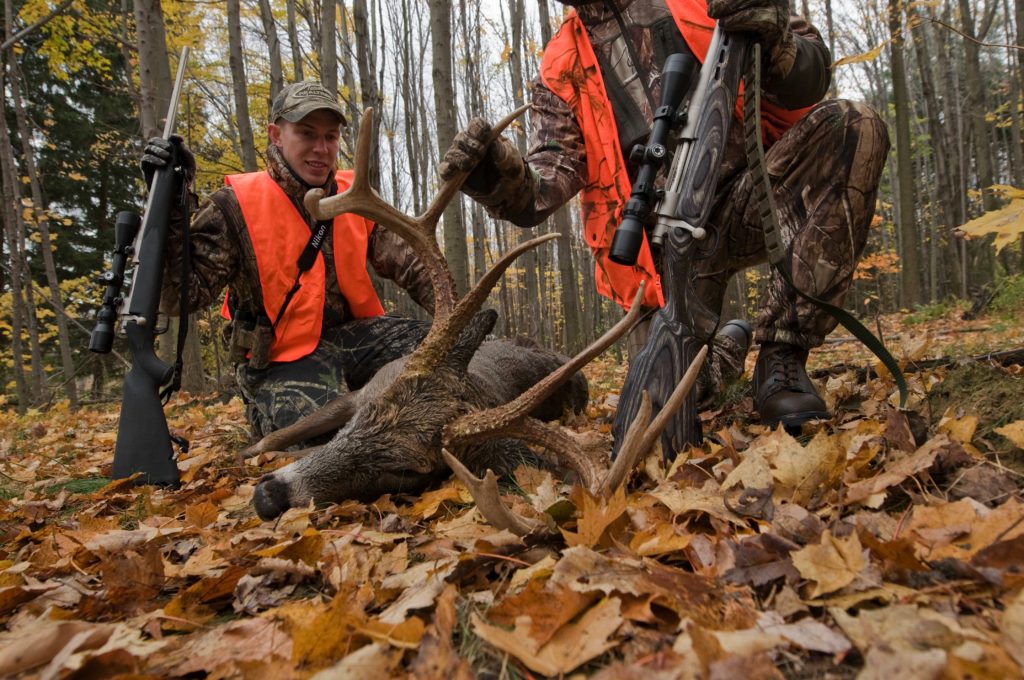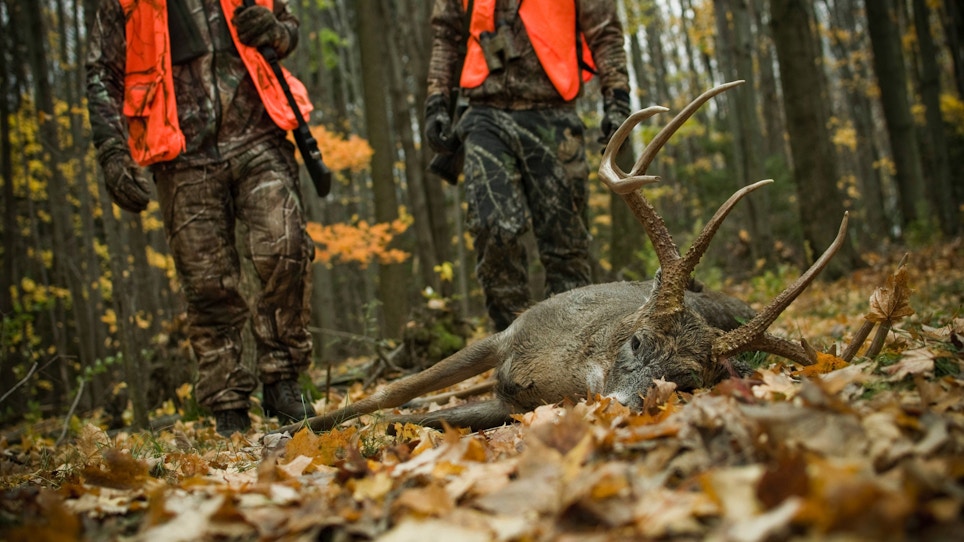A friend of mine killed a huge trophy buck on private property where he paid the landowner for hunting privileges. When he first saw the whitetail, it was limping. One front leg was injured, but the buck was walking. My friend killed the deer.
What happened next astounded him. Thirty minutes had passed when the landowner walked up. Even before he spoke to my friend, he began tying a deer tag to the buck’s antlers.
“I shot him two hours ago and have been tracking him since,” the man said. “I heard your shot.”
The man showed where his bullet had passed through the buck’s shoulder. This wound caused the deer’s hobbling but was not a killing shot. Nevertheless, the man took possession of the deer and left without discussion.
“I was flabbergasted,” my friend said. “He acted as if there was no doubt the deer was his. I felt differently, of course. The landowner wounded the deer, but the animal would probably be alive if I hadn’t killed it. I felt strongly the deer should be mine, but didn’t want to cause a scene.”
Situations like this aren’t new. They happened even in ancient times. Sometimes, hunters settle the matter to the both parties’ satisfaction, but other times a judge must decide the case.
Related: What blood can tell you while tracking deer
How are deer disputes handled in court?
Each case involves different circumstances, so no hard-and-fast rules govern such situations. Nevertheless, enough decisions have been handed down to establish legal precedents all deer hunters should understand.
One early record comes down from Gaius, second-century Roman patriarch of modern lawmakers. “One does not become the proprietor of a wild beast which he has wounded, but which he has not effectually taken,” he wrote. “Pursuit alone vests in the sportsman no property in the animal pursued; and even pursuit accompanied by wounding is equally ineffectual for the purpose, unless the animal is actually taken.” The English later adopted this law as their own, and in time, it spread to America as well.
One early U.S. case involved two New York deer hunters. Mr. Fenning shot a buck. The deer fell but quickly rallied and disappeared with Fenning’s dogs in pursuit. Darkness was falling, so Fenning abandoned the chase and returned to camp.
Six miles from where Fenning wounded it, a second hunter, Mr. Fargo, shot the animal and finished it off. Back on the deer’s trail next morning, Fenning came upon Fargo and his kill and argued his right to the buck because he had wounded it with a shot he believed would prove fatal. Fargo believed the deer was his because he fired the killing shot. Fenning took the case to court — and lost.
“The animal was not deprived of his natural liberty so as to be within Fenning’s control when Fargo gave the finishing shot. The prize must go to Fargo for that shot.”“It is sufficient to give the hunter legal ownership,” the decision read, “if the animal has been deprived of his natural liberty so it is brought within the power and control of the pursuer. But this deer, though wounded, ran six miles. Fenning abandoned the pursuit that day. When he resumed it next morning, he found Fargo had killed the buck the afternoon before.

Not surprisingly, disputes over ownership of does and small bucks are much rarer than disputes over trophy animals. It is wise to do everything possible to assure a clean kill so there is no question as to whom the animal belongs. Photo by John Hafner Photography.
A 1940s case involved similar controversy. Cy Hanson wounded a deer that bounded away. Another hunter, Cal Sutter, saw the injured deer and killed it.
“Hanson claims ownership on the ground he was pursuing and had wounded the deer,” the court explained, “and was therefore entitled to possession of it, even if the mortal wound was given by Sutter. The controlling principle of the common law is that a huntsman acquires no title to any wild animal by pursuit alone, even though there is wounding, unless the animal is followed and reduced to actual possession. Sutter ‘beat him to it,’ and Hanson must accordingly endure his loss.”
In more recent years, some judges, without actually departing from the established rule giving the game to the person who inflicted the killing shot, have recognized the possibility that the first hunter’s shot, itself, was mortal. And in cases where this was proved, the game was declared to be owned by the first hunter rather than the person who put the last bullet into it.
A Wisconsin court, for example, ruled “The instant a wild animal is brought under control of a person so actual possession is practically inevitable, a vested property in it accrues to him which cannot be divested by another’s interfering and killing it.”
Related: 10 solutions for rut-hunting problems
What do I do if I find myself in this situation?
Happily, such disputes don’t often wind up in court. One hunter or the other usually concedes the issue and backs out. Or it can come down to a coin flip. But hunters naturally resent their quarry being taken by an unsportsmanlike interloper.
How today’s courts might rule on such a case, I cannot say. But the above precedents lead me to believe a common sense approach is likely. If a hunter kills an animal previously wounded by another, and if he can prove that animal had not been mortally wounded by the first party, the hunter who killed the game will be determined to own that game.
In the end, however, the best course of action is the one taken by my friend: follow the Golden Rule. If we all emulated his example, everyone would be a winner.
Featured photo by John Hafner Photography






